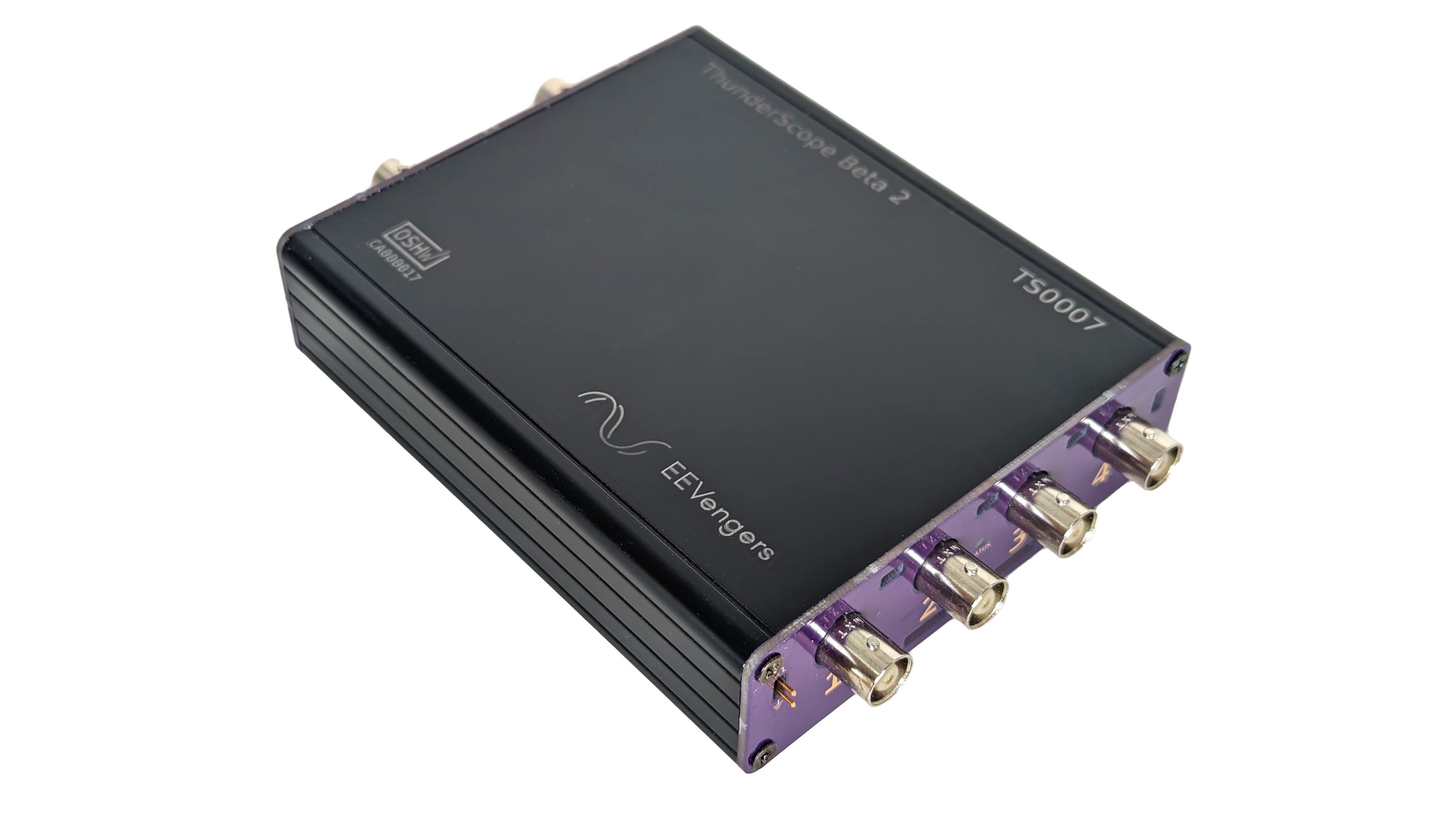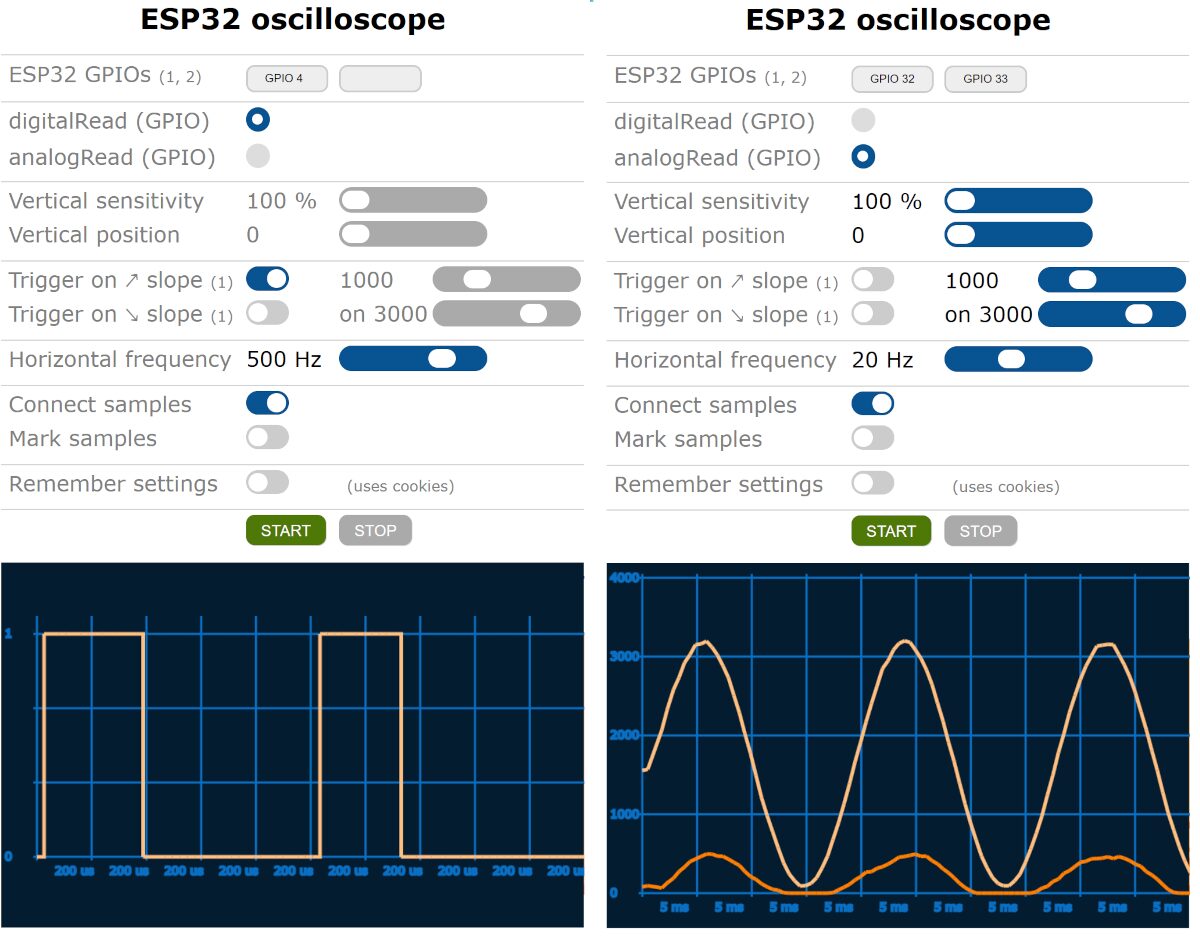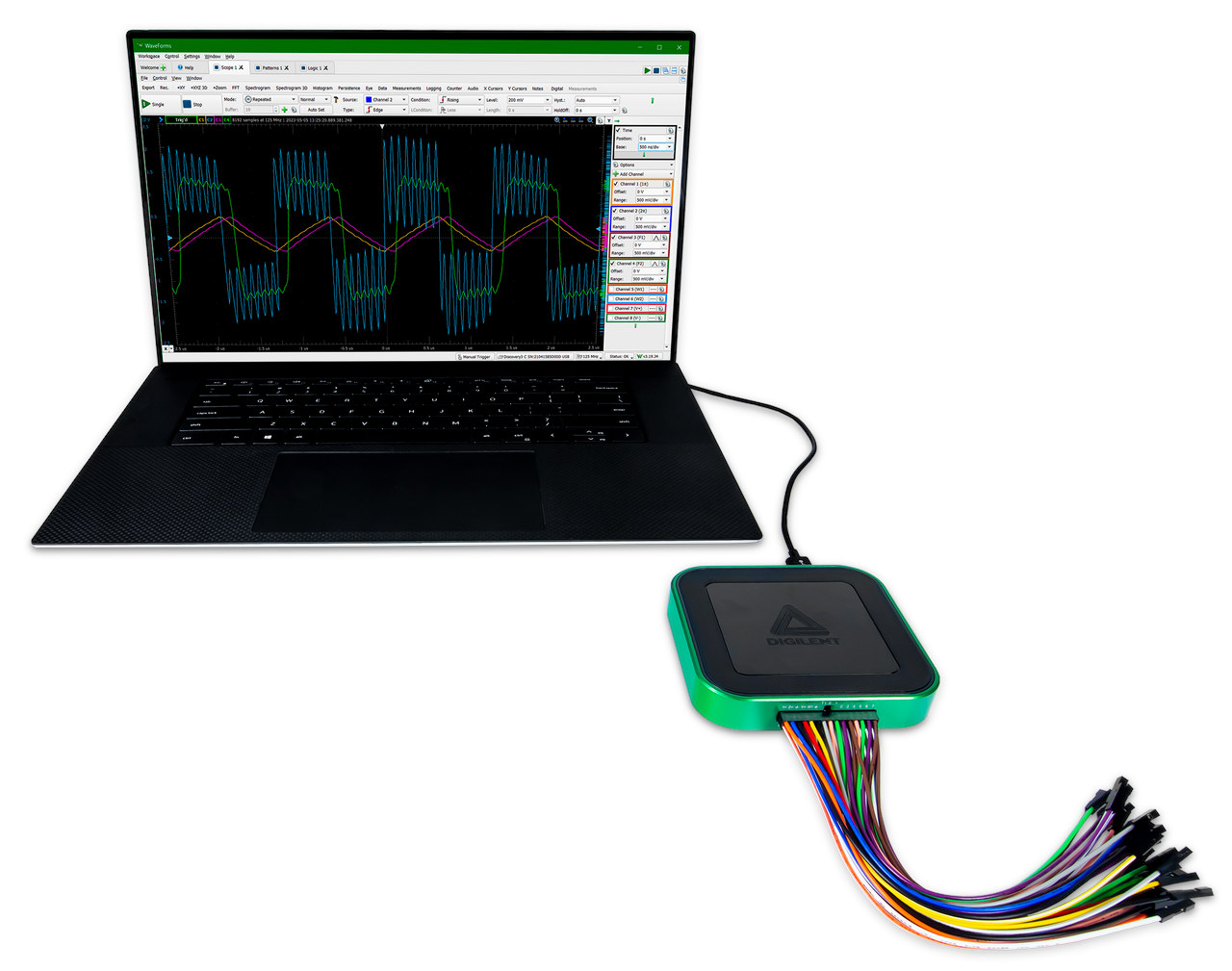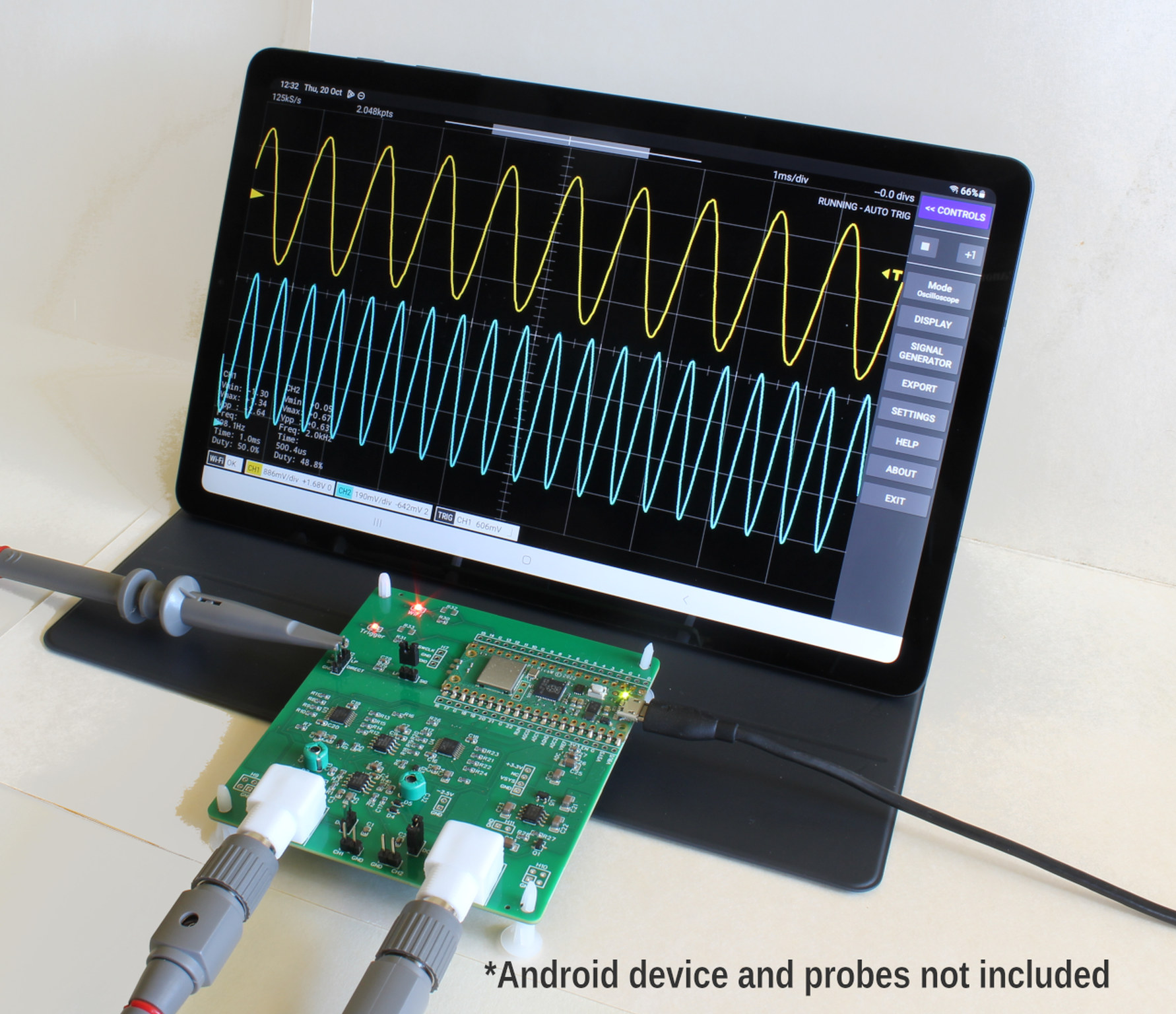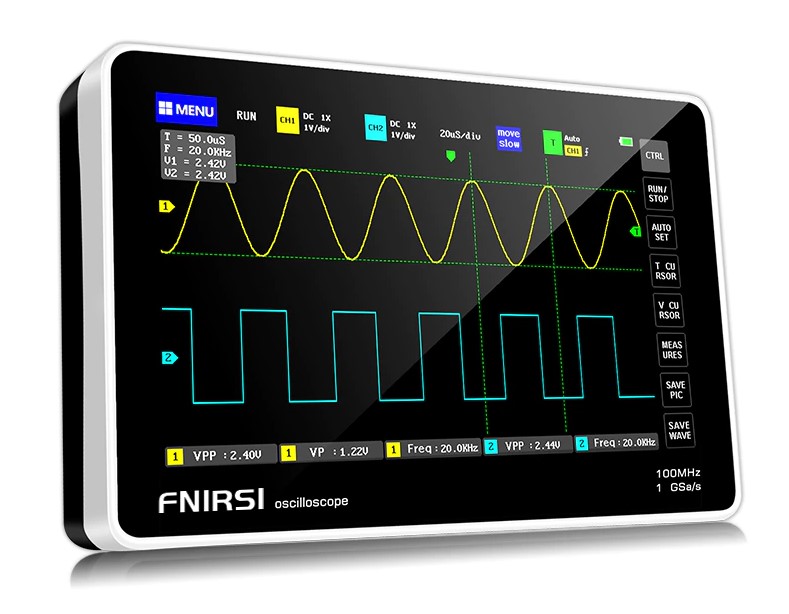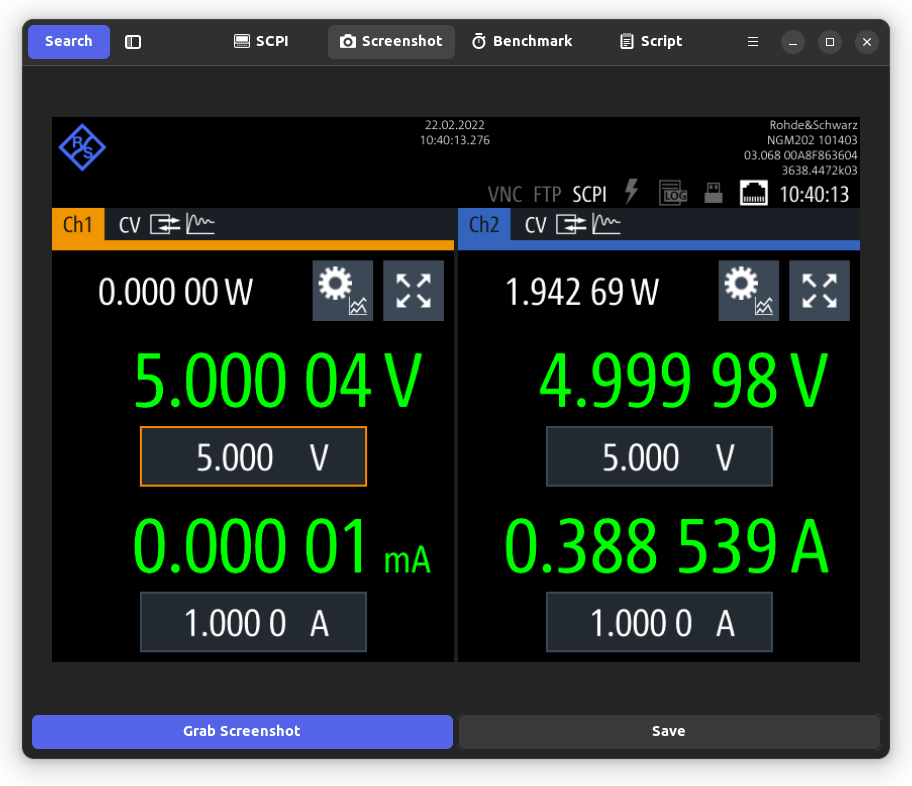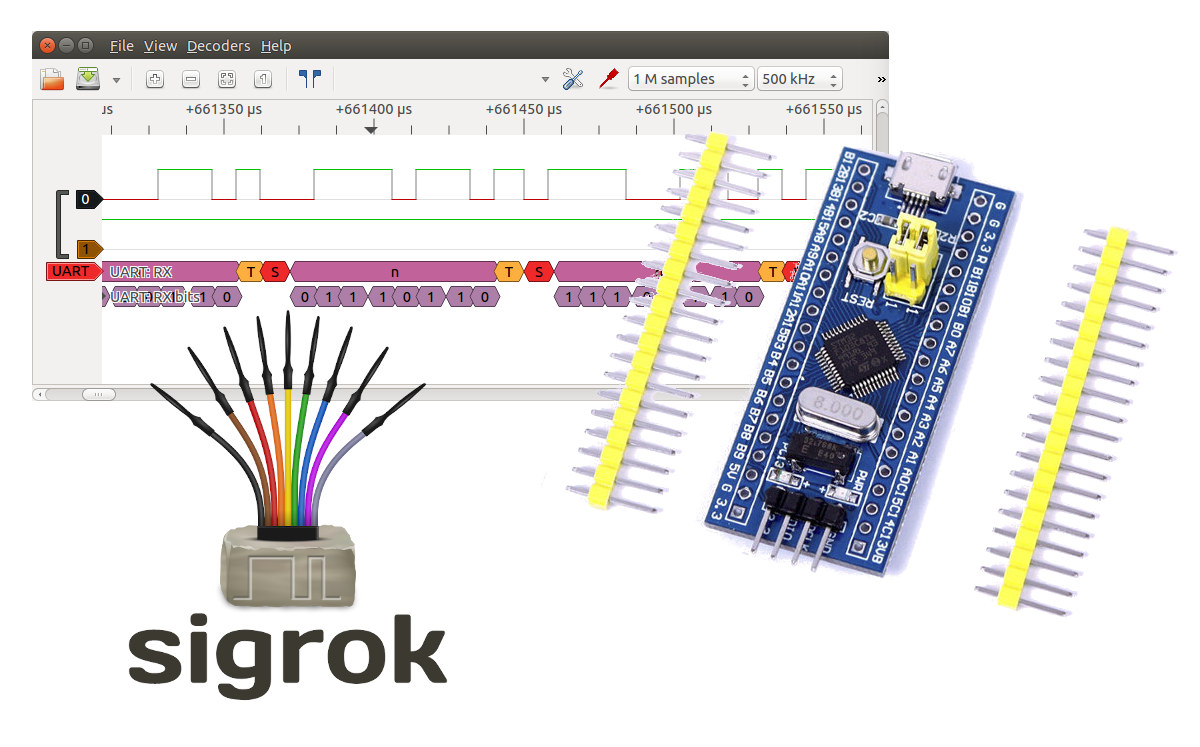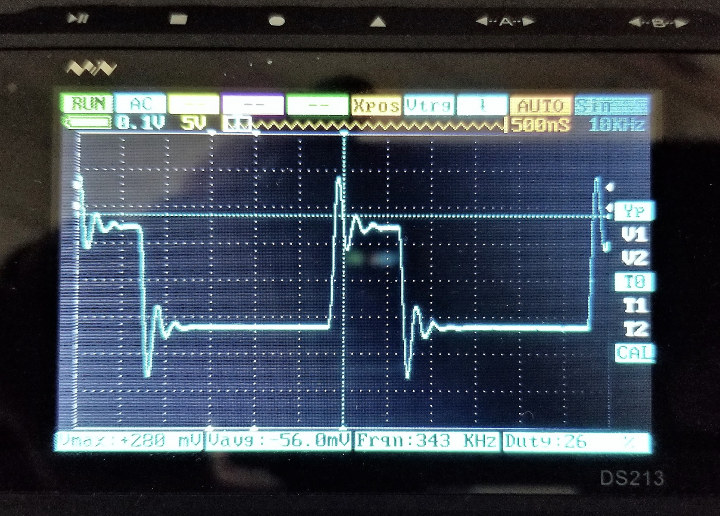The ThunderScope is an open-source, Thunderbolt/USB4 and PCIe oscilloscope with a sampling rate of up to 1 GS/s. It is portable, presents an affordable, open-source alternative to expensive bench-top and PC-based scopes, and delivers a higher sampling rate than most USB oscilloscopes. ThunderScope streams sample data to your computer for processing and analysis, unlike traditional oscilloscopes which “are limited by their built-in processing capabilities and cramped user interfaces.” It uses the fastest available interface, Thunderbolt, to stream data, allowing it to use your computer’s full potential. ThunderScope is “the only scope that will get better every time you upgrade your computer.” The Thunderbolt oscilloscope is based on AMD’s Artix 7 XC7A35T-2CSG325C FPGA. It supports up to four channels and a full analog bandwidth of 500 MHz (with the anti-aliasing filter disabled). It doesn’t require an external power source, as it is powered via the Thunderbolt port. It comes in a […]
Esp32_oscilloscope Arduino firmware turns your ESP32 board into a web-based oscilloscope
Bojan Jurca’s “Esp32_oscilloscope” is an open-source Arduino sketch that can transform an ESP32 board into a web-based oscilloscope that works over WiFi. We had also written about the Scoppy project to turn the Raspberry Pi Pico W into a 2-channel oscilloscope, but there’s no reason the more powerful ESP32-series microcontroller could not be used for the same purpose, and Bojan’s Esp32_oscilloscope project does just that and works with ESP32, ESP32-S2, ESP32-S3 and ESP32-C3 boards using the I2S interface for fast data sampling. The project was initially designed to demonstrate the multitasking abilities of the ESP32 microcontroller with Arduino, but this evolved into an ESP32 oscilloscope firmware. It works both with output/PWM and input signals, digital (0 or 1) and analog (0 to 4095) signals, and the web interface shows up to 736 samples per screen although the sampling rate may not be completely constant all the time. To install it […]
Analog Discovery 3 – A 125 MS/s USB oscilloscope, waveform generator, logic analyzer, and variable power supply
Digilent Analog Discovery 3 is a USB oscilloscope with a sample rate of up to 125 MS/s, that can also be used as a waveform generator, logic analyzer, and/or a variable power supply up to 5V. Several other features are also enabled through its software and the USB-C oscilloscope can also act as a spectrum analyzer, a network analyzer, an impedance analyzer, a protocol analyzer, a data logger, a voltmeter, and supports in-app scripting. Analog Discovery 3 features highlights: Xilinx FPGA-based design Host interface – USB Type-C port Oscilloscope 2x differential channels with 14-bit resolution at up to 125 MS/s per channel with a +/-25 V input range, 30+ MHz bandwidth with BNC Adapter User-configurable input filters and lock-in amplifier FFT, Spectrogram, Eye Diagram, XY Plot views, and more Arbitrary Waveform Generator 2x channels with 14-bit resolution at up to 125 MS/s per channel with a +/-5 V output range, […]
2-channel DSO-500K WiFi oscilloscope is based on Raspberry Pi Pico W board
FHDM TECH DSO-500K is a 2-channel 500kS/s WiFi oscilloscope based on Raspberry Pi Pico W board that can also work over USB, and offers an analog bandwidth of up to 150kHz. We previously had seen the Raspberry Pi Pico board used as a logic analyzer, so it should come as no surprise that somebody has also come up with a Raspberry Pi Pico W-based oscilloscope that enabled visualization on Android over WiFi or USB. DSO-500K specifications and features (through the Scoppy app): MCU board – Raspberry Pi Pico W board with RP2040 dual-core Cortex-M0+ microcontroller, 2MB SPI flash, WiFi 4 and Bluetooth connectivity Sample rate – Up to 500kS/s sample rate (250kS/s with both channels enabled) Analog bandwidth – 150kHz Record length – 2048 samples per channel in RUN mode, 100kS total for single shot captures Inputs – BNC connectors or 0.1-inch headers Input Impedance – 1MΩ / 22pF Input […]
FNIRSI 1013D teardown and mini review – A portable oscilloscope based on Allwinner CPU & Anlogic FGPA
The FNIRSI 1013D is a dual-channel flat-panel oscilloscope with a rich set of features. It is cost-effective and useful to people in the maintenance and R&D industries. Although it has been on the market for a few years, I purchased one, and I decided to introduce it and disassemble it to check out the hardware design. FNIRSI describes its oscilloscope as “small and portable”, so I assume it should include a lithium battery, a TFT LCD screen, a processor to handle the display, and another chip to process the digital signals. Let’s take it apart first to find out. FNIRSI 1013D oscilloscope unboxing FNIRSI 1013D package content: 1x FNIRSI 1013D oscilloscope 2x 100MHz matching probes (1X and 10X) 1x USB cable 1x Charging adapter 1x Instruction manual The FNIRSI 1013D adopts a 7-inch 800 x 480 resolution color TFT LCD with a capacitive touch screen. There are two input channels […]
Open-source LXI Tools is made for “LAN eXtensions for Instrumentation” compliant test instruments
LXI Tools is an open-source project designed to manage Ethernet-connected test instruments such as oscilloscopes, power supplies, spectrum analyzers, etc… that are compliant with the “LAN eXtensions for Instrumentation” standard, or LXI for shorts, hence the name of the project. LXI Tools is available either as a command-line program (lxi) or a graphical user interface (lxi-gui), and includes features such as the automatic discovery of test instruments, sending SCPI (Standard Commands for Programmable Instruments) commands, grabbing screenshots from supported instruments, benchmarking SCPI message performance, and Lua scripting for test automation. The tool is compatible with higher-end instruments compatible with LXI from vendors such as Keysight Technologies, Kikusui Electronics, Rigol Technologies, Rohde & Schwarz, Siglent Technologies, and Tektronix. All support SCPI commands, while autodiscovery and screenshot functions are supported by most tested models. While it’s possible to build the project from source using meson, the easiest way to install LXI Tools […]
Turn $1.5 Blue Pill STM32 board into a Sigrok compatible logic analyzer
“Blue Pill” is a popular STM32 development board thanks to its low cost – now as low as $1.50 on Aliexpress – and Arduino compatibility via the STM32duino project. People have created all sorts of projects around the tiny STM32 board, but I find Mark (aka thanks4opensource) buck50 test and measurement firmware very interesting as it turns the Blue Pill board into a logic analyzer compatible with the open-source Sigrok command-line tool and PulseView GUI. Mark explains the firmware is still at the beta stage, so bugs will most likely have to be fixed. Nevertheless, Buck50 firmware should enable the following key features on the Blue Pill board: 8 channel, 6+ MHz logic analyzer Approx. 5K sample buffer depth Samples stored only at signal edges for efficient memory usage Complex triggering via user-defined state machine supporting combinations of sequential (“A then B then C”) and logical-OR (“A or B or […]
SainSmart DS213 Review – A Portable Mini Digital Storage Oscilloscope
Hey Karl here with another oscilloscope review. We are going to look at the DSO213 (aka DS213 mini DSO). It is a new handheld oscilloscope in the DSO line. I recently reviewed an oscilloscope that was a tethered USB oscilloscope and will use it as a comparison. The DSO213 is a compact, battery powered, oscilloscope that increases some specs over previous version the DSO203. DS213 Oscilloscope Unboxing and Teardown Pictures . I thought this was an interesting design choice. Pogo type pins connect this board. This series of scopes has been reviewed quite a bit and they have been well received and for a hobbyist they seem to be adequate. Model DSO213 DSO203 MCU STM32F103VE STM32F103VE ADC HWD9288 AD9288 Channels 2 analog, 2 digital 2 analog, 2 digital Analog Bandwidth 15MHz 8MHz Max Sample Rate 100MSa/s 72MSa/s Maximum Memory Depth 4K 4K Horizontal Sensitivity 100nS/Div~1S/Div(1-2-5sequence step) 0.1uS/Div~1S/Div(1-2-5sequence step) Vertical Sensitivity […]


